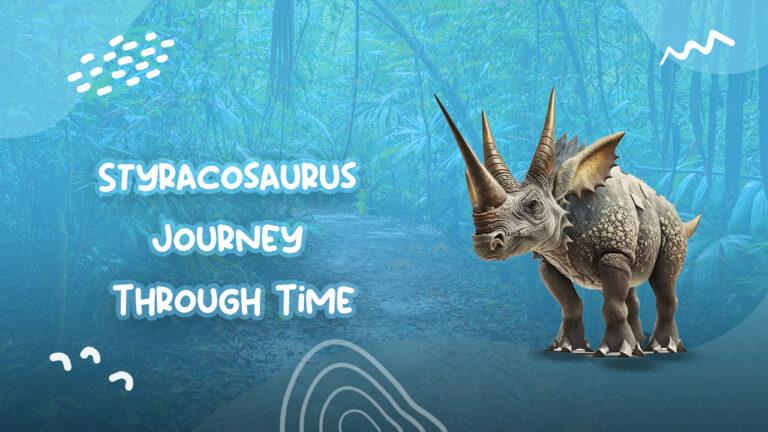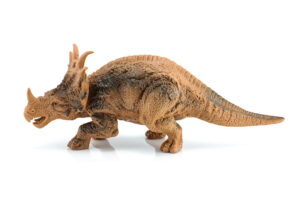Styracosaurus – Ultimate Journey Through Time

If you’re a fan of dinosaurs, then you’ve heard of the styracosaurus. But what do you know about this ancient creature? Read on to discover more about this exciting species, and take a journey through time! Get ready to uncover fascinating insights into the life of the Styracosaurus, a majestic and captivating creature of prehistoric times.
A Brief History of the Styracosaurus
The styracosaurus is an ancient creature that lived during the Cretaceous period in what is now North America. It was a herbivore and a member of the ceratopsid family, like its close relative, Triceratops. The styracosaurus had six long horns on its head, one at the tip of its nose, two above its eyes, and three at the back of its head. It also had spikes along its neck frill as well as along its tail. Its body could reach up to 9 meters in length and it weighed up to 4 tons!
The Styracosaurus is a genus of herbivorous ceratopsian dinosaurs that lived in what is now North America during the Late Cretaceous period, around 75 million years ago. Weighing up to 4 tons and measuring up to 15 feet long, this impressive beast has an instantly recognizable head adorned with a large frill full of spikes.
Physical Characteristics
The Styracosaurus had four long horns on its head and a large, bony frill with spikes along its edge. It also had two small horns behind each eye and one above them. Its body was approximately 6 to 10 meters (20 to 33 feet) in length and weighed around 4 tons. It also had thick, spiky scales covering its body from head to tail, protecting it from predators.
The Styracosaurus was one of the larger ceratopsians. It had a short, stout body with four powerful legs and a large tail that helped it maintain balance while running or turning quickly. Its most distinctive feature was its long frill, which extended from the back of its head and was filled with 6-8 long spikes that grew to up to 10 inches in length! As if that wasn’t intimidating enough, younger specimens were also known to have multiple horns sprouting from their heads as well.
Diet and Habitat of Styracosaurus
The Styracosaurus was a herbivore, which means it ate plants exclusively. It lived in open woodlands near rivers in western North America during the Late Cretaceous period, roughly 70 million years ago. This type of habitat provided plenty of grasses for this dinosaur to graze on. Fossil evidence suggests that it moved in herds, similar to modern-day cattle or deer herds today.
It roamed across gently rolling hills covered in thick forests of conifers and deciduous trees. It would use its powerful beak-like mouth to munch on tough vegetation found among these trees and along rivers and streams nearby. In addition, it would form herds with other ceratopsians like Triceratops to help defend itself against predators like Tyrannosaurus rex or Albertosaurus.
Behavioral Traits
Although we can’t know for sure exactly how the Styracosaurus behaved, paleontologists have made some educated guesses based on observations of living animals with similar features (like rhinos).
For instance, it likely lived in herds as mentioned above which could have been used for protection against predators or even just as a way to find food more efficiently. It also may have used its horns or spikes as weapons against enemies or rivals when competing for mates or territory during mating season—just like some modern-day animals do!
Fossils and Extinction
The first fossilized remains of the Styracosaurus were discovered in Alberta, Canada in 1913 by Lawrence Lambe, who named it “spiked reptile.” Since then, hundreds more fossils have been discovered all over western North America.
Most scientists believe that this species went extinct around 66 million years ago due to climate change or an event like an asteroid impact wiping out much of life on Earth at that time.
The Discovery of Styracosaurus Fossils
The first discovery of a styracosaurus fossil was made in Alberta, Canada in 1913 by paleontologist Lawrence Lambe. Since then, more than 200 specimens have been found in various parts of North America, including Montana and Wyoming in the United States. These fossils have helped palaeontologists piece together our understanding of how Styracosaurus lived and behaved during their time on Earth.
The Styracosaurus is one of the most iconic dinosaurs because it has such a unique combination of features—from its impressive horns and large frill to its thick scales that protected from predators—it’s clear why this species is so memorable! Although we don’t know for sure what led to their extinction about 66 million years ago, paleontologists continue searching for answers through new fossil discoveries every day
What We Know About Styracosaurs Today
From studying fossils, we know that Styracosaurus were herbivores that ate plants such as ferns and cycads. They also used their horns to defend themselves against predators such as tyrannosaurids. We know that they lived in herds and moved around slowly due to their large size. Thanks to these fossils we can also get an idea about their coloring—it is believed they may have been reddish-brown or greyish-green with lighter stripes or spots running down their backs!
Conclusion
journeying through time with the Styracosaurus is thrilling! From uncovering their lifestyle to reconstructing their appearance, exploring these creatures fascinates dinosaur enthusiasts worldwide. Ongoing paleontological investigations deepen our understanding. The Styracosaurus, with its imposing size and distinctive frill adorned with horns and spikes, remains iconic.
These features served vital roles in defense, mating, and weather adaptation. Though extinct, fossil evidence ensures our enduring fascination. Let’s continue exploring our world through stories like this!
Learn about Iconic Lambeosaurus Dinosaur: Axe Head Dinosaur

Top posts
related articles
Discover The Top 10 Longest Dinosaur Names
Dinosaurs, the ancient giants that once roamed the Earth, continue to capture our imagination. While
Discover the Amazing Dinosaur with 500 Teeth
Dinosaurs have always fascinated us with their colossal size, unique features, and intriguing mysteries. One
Acheroraptor – Tiny But Fierce Dinosaur
The dinosaur world is undoubtedly fascinating, and the relative discovery of the Acheroraptor is no
Amazing Cryolophosaurus- An Epic Tale
Cryolophosaurus, also known as the ‘Antarctic King’, was a fierce and fascinating dinosaur that existed
Discover Torosaurus And Its Mysterious Identity
Dinosaurs don’t exist anymore, but their fossils still fascinate us. Paleontologists scour the earth to
Corythosaurus–Exploring Its Wondrous World
The world of dinosaurs never stops fantastic us. From the huge T-rex to the tiny



